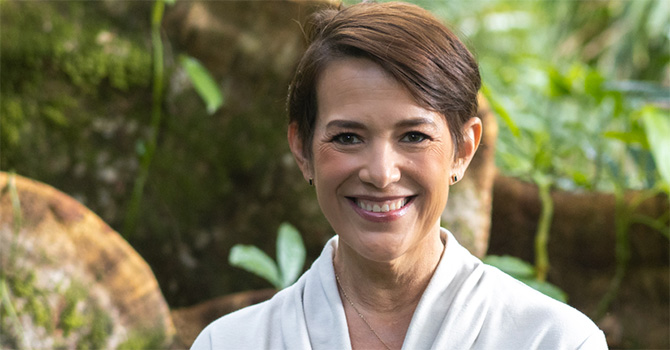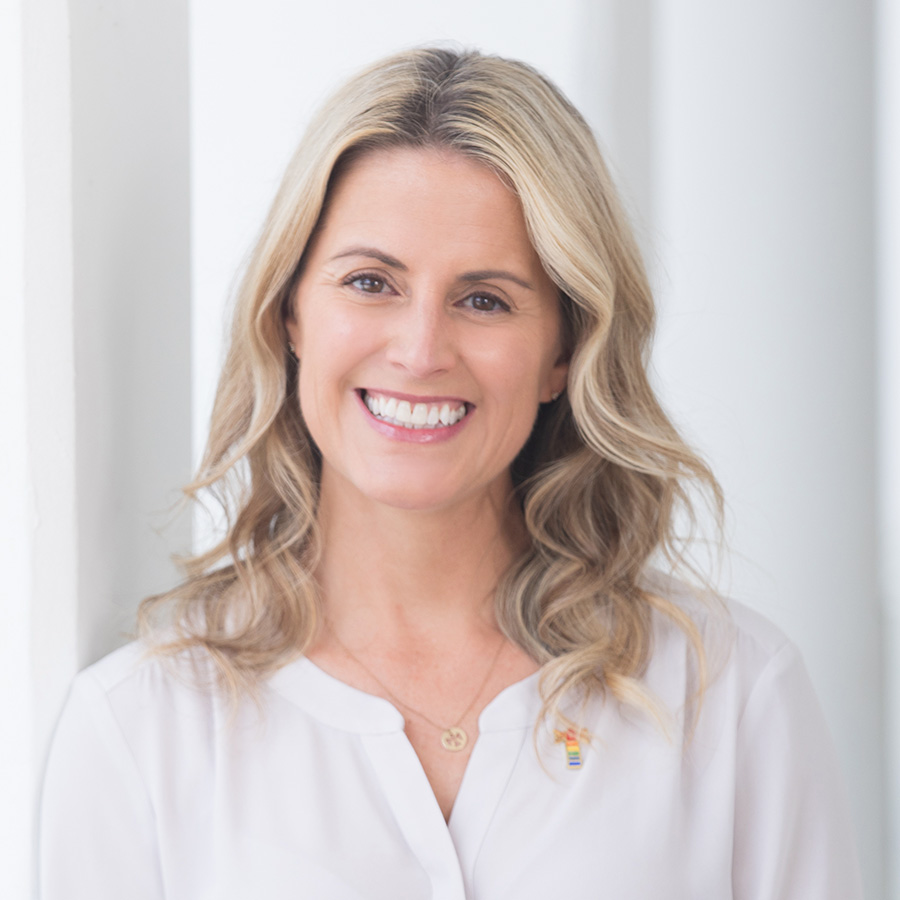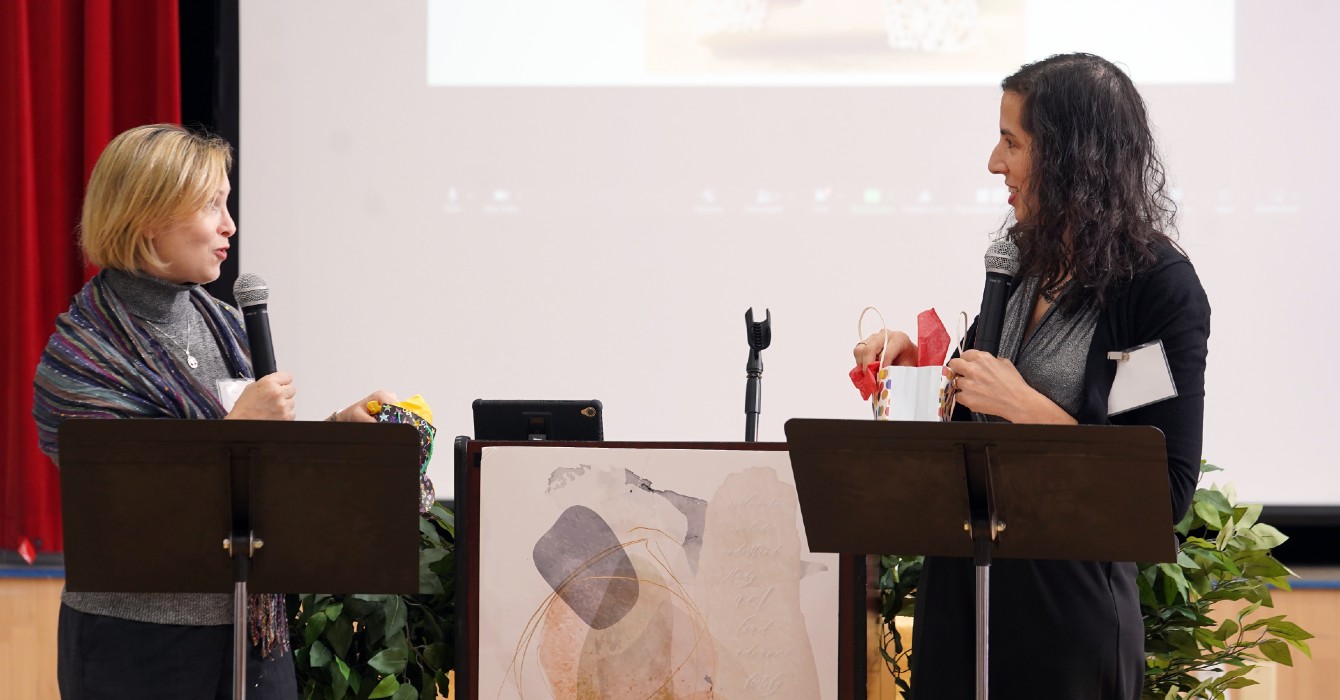In the dilapidated gym at Hoffman-Parham Elementary School in Cincinnati, third-graders swirl and dance, giggle and sway, moving in time to the “Blue Danube Waltz” blaring from a CD player. They are proud to show off for their parents and fellow students, yet slightly awed by their instructor, a dancer from the Cincinnati Ballet.
But this isn’t just a ballet performance. It’s also a lesson in geography and language arts. The dance has been choreographed to help the students not only appreciate ballet but also hit key benchmarks in the all-important Ohio Achievement Test, given to students throughout the state each spring. As the kids glide across the room, they show how the Danube flows from west to east. When they touch the 10 hula hoops scattered about the gym, they depict how the Danube flows through or along 10 different European nations. When the dancers gleefully collide into the far wall, they are the Danube, emptying into the Black Sea.
At a time when school districts nationwide are cutting budgets, it’s no longer a given that music, art and dance are essential to a child’s education. In Cincinnati, however, arts advocates and educators are working together to make sure the arts remain a vital part of children’s lives, helping them to excel academically.
The catalyst that’s bringing them together is Strive, a new kind of nonprofit that creates collaborative partnerships among others, in this case to improve education for children in Cincinnati. Founded in 2006, Strive is an upstart that is changing the way nonprofits operate and view themselves. It is at once a facilitator, a convener, a support system and an über-nonprofit. It may even be the future of nonprofits.
“We’re the dot connectors, bringing people together for systemic change,” said Geoff Zimmerman, Strive’s director of continuous improvement. “We’re a nonprofit that helps improve the systems that need to change for education to improve.”
The flowing dance of the Danube is a perfect example of how Strive works. For years, people in Cincinnati’s arts community, working through the Fine Arts Fund -- an 83-year-old nonprofit that supports arts throughout the region -- planned and implemented programming in the city’s schools. But they didn’t always know what local educators wanted and needed.
‘Who are our customers?’
Strive encouraged them to think about their task differently, more like a business would, using a “continuous improvement process.” First, they needed to ask themselves, “Who are our customers?” The answer changed their whole approach to programming for the schools.
“They realized that students are their customers, yes, but also teachers and schools,” said Debbie Curl-Nagy, Strive’s associate director of systems innovation. “And what’s important to those customers is that they get good ratings on tests in math and reading.”
As a result, the city’s arts organizations started figuring out how their programs could better meet their customers’ needs. They designed programs that could help the schools achieve their desired outcomes, and it’s working, Curl-Nagy said.
The arts network is just one of 15 areas where Strive is working to improve education “from cradle to career” (as the organization’s tagline puts it) for young people in greater Cincinnati. The organization was launched after extended community discussion about how to improve local schools’ performance on several educational benchmarks, from the percentage of five-year-olds ready to start kindergarten to the percentage of high school graduates going on to college.
The fledging nonprofit recruited a “who’s-who” list of prominent Cincinnatians to serve on its board of directors. With that and generous funding from the KnowledgeWorks Foundation and the Bill & Melinda Gates Foundation, Strive set out to create partnerships to enhance education throughout the region -- not only in Cincinnati but also across the Ohio River in Covington and Newport, Ky.
After only a few years, the program has seen impressive results. The high school graduation rate in Cincinnati’s urban core -- 72 percent in 2004 -- jumped to 82 percent by 2008. Kindergarten-readiness rates, while still low, have moved up four points to 48 percent since 2006. And that’s just the beginning.
Crunching numbers, sharing data
Strive’s goal -- to help ensure children’s success from birth through college and beyond -- is remarkably ambitious. But with the help of some of Cincinnati’s most visible corporations, Strive has a detailed action plan to make it happen. Procter & Gamble loaned the nonprofit a staff member, while Toyota and GE provided systems thinkers who could explain how they use continuous improvement processes in their work.
“We wanted to know how we could apply those same principles to education,” said Jennifer Blatz, Strive’s director of operations.
Those conversations led Strive to adapt GE’s “Six Sigma” program for use in the social sector. Basically, Six Sigma is a business management strategy aimed at maximizing results. The process outlines a series of crucial steps such as defining a team, creating a charter and developing a plan to measure success or failure systematically, based on data.
GE developed its version of Six Sigma to encourage collaboration among internal departments, which is difficult enough. Strive’s challenge may be even greater: It’s using Six Sigma across a broad spectrum of organizations such as schools, local governments, businesses and philanthropies, each with its own way of collecting and measuring data.
As a result, Strive has invested significant time and resources in helping its affiliated organizations make sure they are comparing apples to apples when they talk with each other. It has helped some organizations create databases or hook up with corporate partners who can show them how.
“One thing that has become apparent is that we’re not necessarily creating the solution, but a system to learn what the solutions are,” said Zimmerman, Strive’s director of continuous improvement. “A focus on data helps to create that learning system.”
Collaborators or rivals?
For some Strive participants, collaboration doesn’t come easily. Many of the nonprofits compete against each other for funding from corporate sponsors. Why would they want to share proprietary research and information with potential rivals?
“They come to the table as competitors,” Curl-Nagy said. “They’re kind of leery of each other. It’s like they’re saying, ‘This is my stuff, and I’m not sure how much I want to share with you.’”
Fortunately, the organizations soon discover that they all want the same things for Cincinnati’s children. They realize too that they can learn much from each other.
“We have so many nonprofit organizations and providers in this area,” Curl-Nagy said. “But everybody works in silos, and there’s only so far they can go by themselves.”
Strive’s mentoring network is a good example of how different organizations are learning to work together. Coming from both sides of the Ohio River, the member organizations all focus on using adult volunteers to help school children. Thanks to Strive, they’re sharing information and learning from one another how to move forward.
“The folks from Covington have really good data on how mentoring has made a real difference in students’ success, improving attendance rates and achievement scores,” Zimmerman said. “Now, Cincinnati Public Schools is looking at that and working on trying to get the same data measurements in place.”
Strive-generated partnerships have also impressed Rolonda Smith, executive director of Parents for Public Schools of Greater Cincinnati, a nonprofit that seeks to increase parent involvement in the schools. Even before Strive, nonprofits in the area would occasionally work together, but the partnerships were usually small and brief, focused on a particular issue. Strive, however, took nonprofit collaboration to a grander and more permanent level, bringing in large organizations such as the Boys & Girls Clubs and the United Way.
“We’ve been able to share information for the good of the children, and that’s been so helpful for the community,” Smith said.
It’s critical to have a champion
For nonprofits to collaborate successfully, they must have a point person who is willing to serve as a leader, Zimmerman said. Ideally, this will be someone from an umbrella organization like Strive that doesn’t have a direct stake in one nonprofit over another.
“It’s critical to have a champion or a leader for these networks,” Zimmerman said. “Otherwise, it’s a lot more difficult to get people to claim ownership.”
But ultimately, the success of Strive’s collaborative networks depends on the member organizations and how invested they are in turning things around for kids.
“We want community-owned leadership,” Zimmerman reported. “It can’t just be Strive.”
One of the key steps in GE’s Six Sigma program -- and in Strive’s adaptation -- is “continuous improvement.” In GE and elsewhere in the corporate world, it means that at every stage in the life of any given product -- R&D, production, warehousing, distribution and sales -- checks are in place to fix problems as they arise and before they escalate into crises.
In the nonprofit sector, continuous improvement is different. Here, it cuts more directly to the bottom line: projects that can be measured and shown to be successful get funded. Those that aren’t successful -- or can’t be shown to be -- probably won’t.
‘Spray and pray’
This approach is a big advance over what has been the predominant method of funding nonprofits, which Curl-Nagy called “spray and pray:” “You spray money around and hope that something hits.”
In this older model, organizations might be awarded a large one-time grant and then, at the end of the grant cycle, explain how the money was used and how successful they felt the program was. Such a system, though, is rife with problems. What if the program was a disaster, but the money was already spent before it could be recalled? Are grant recipients really the most impartial judges of whether it was a good use of funding?
In the emerging new world of nonprofits, such tactics no longer fly. Today, more corporations and foundations are doling out smaller grants and promising to renew them only if certain benchmarks are achieved. Because funders are requiring evaluations at every stage of the process, nonprofits have to be able to provide the kind of shared data and number crunching that Strive is helping its affiliates learn how to do.
“This is a change to much more investment in what’s working,” Curl-Nagy said.
For nonprofits, the focus on data and measurement represents a great opportunity, she said. Because continuous improvement is about measuring outcomes all along the way, organizations have to constantly assess what works and what doesn’t.
“You can then make changes before you get to the end and make your money work better for you,” she said.
In the end, everybody wins. The funders are assured their money has been used as they intended. The nonprofit grant recipients get to tweak their approaches constantly, always focusing on what they do best.
Strive goes national
The Strive initiative is clearly at the forefront of collaborative models for education, and other cities are starting to take notice. After little more than three years, the program is already going national in a partnership with Living Cities (a philanthropic collaborative of large foundations) and the Coalition of Urban Serving Universities.
Working with those organizations, Strive has selected several target cities that have the necessary conditions to replicate Strive’s success in cross-sector educational partnerships. All the target cities -- called “implementation sites” -- have an urban university that will serve as an anchor for the community. So far, four additional cities have been selected: Richmond, Va.; Indianapolis, Ind.; Houston, Texas; and Hayward, Calif. Several other cities have been named “development sites” and are just beginning the program. Those cities -- Memphis, Tenn.; Albuquerque, N.M.; Mesa, Ariz.; Fresno, Calif.; and Portland, Ore. -- have qualified for more limited funding and some technical assistance.
Many more cities are interested in joining the program, but Strive plans to proceed at a measured pace.
“We have to be careful to not grow too fast so we can serve the chosen cities,” Curl-Nagy said. “Just because somebody wants to do it doesn’t necessarily mean they’re ready.”
But the cities that are ready should be able to replicate Strive’s success relatively soon, Curl-Nagy said, certainly faster than Strive did the first time around in Cincinnati. After all, they have the benefit of Strive’s experience and can learn what worked and what didn’t.
At the same time, patience is essential, and the new cities have to be careful not to move too fast.
“They know where they want to go and they want to meet a timeline,” Curl-Nagy said. “But you can’t rush the relationships and the foundations. You have to have people really engaged and believing that they can be part of the solution.”
Questions to consider
Questions to consider:
- How can your church or institution be a “dot connector” and create collaborative partnerships among other organizations with similar interests?
- Who are your customers? What do they consider their greatest needs?
- Strive is expanding beyond the traditional boundaries of nonprofits. In what ways can or should your church or institution rethink and re-imagine its boundaries?
- How can you implement continuous improvement techniques in your institution and among those with whom you collaborate?
- What is the difference between creating a system to learn what the solutions are versus focusing simply on the solutions?













